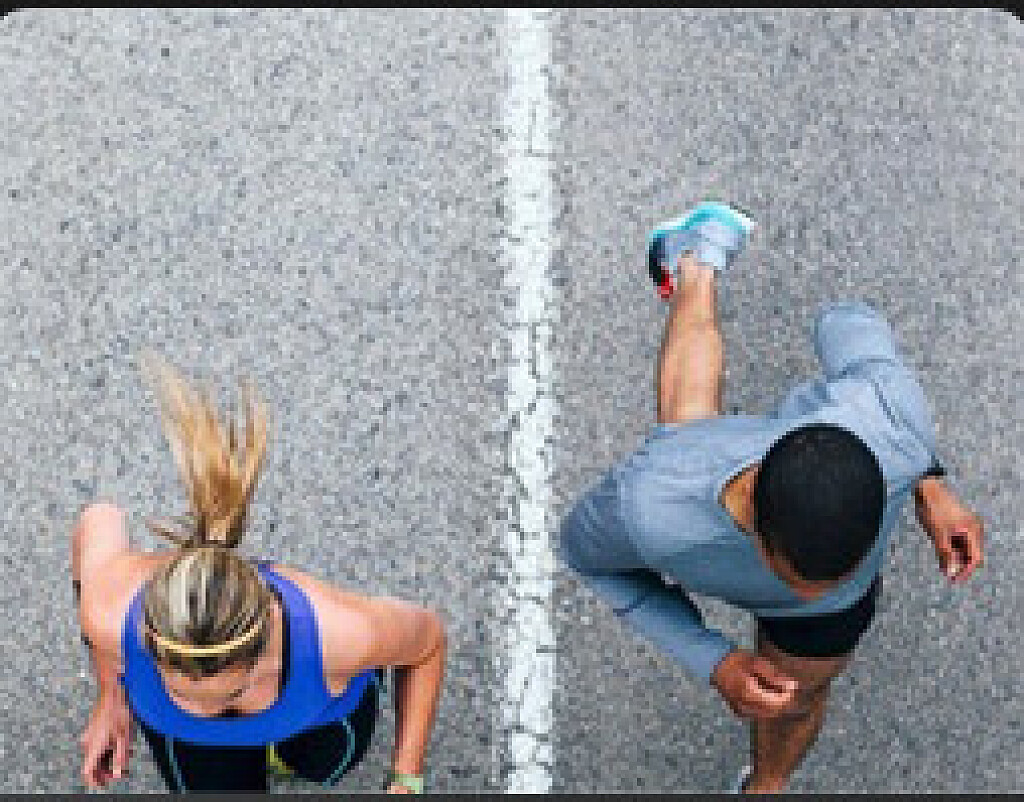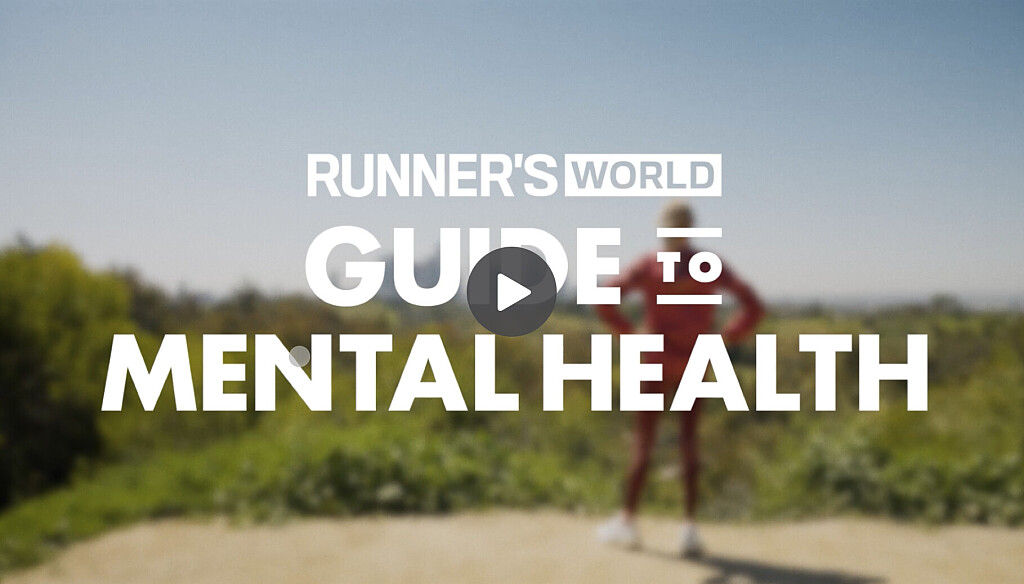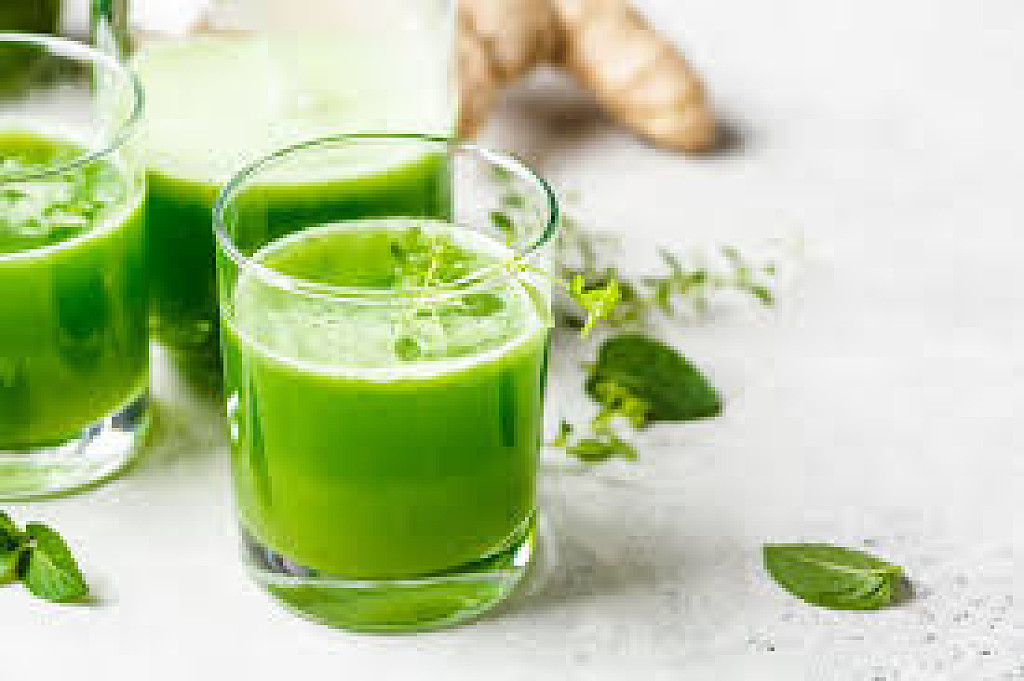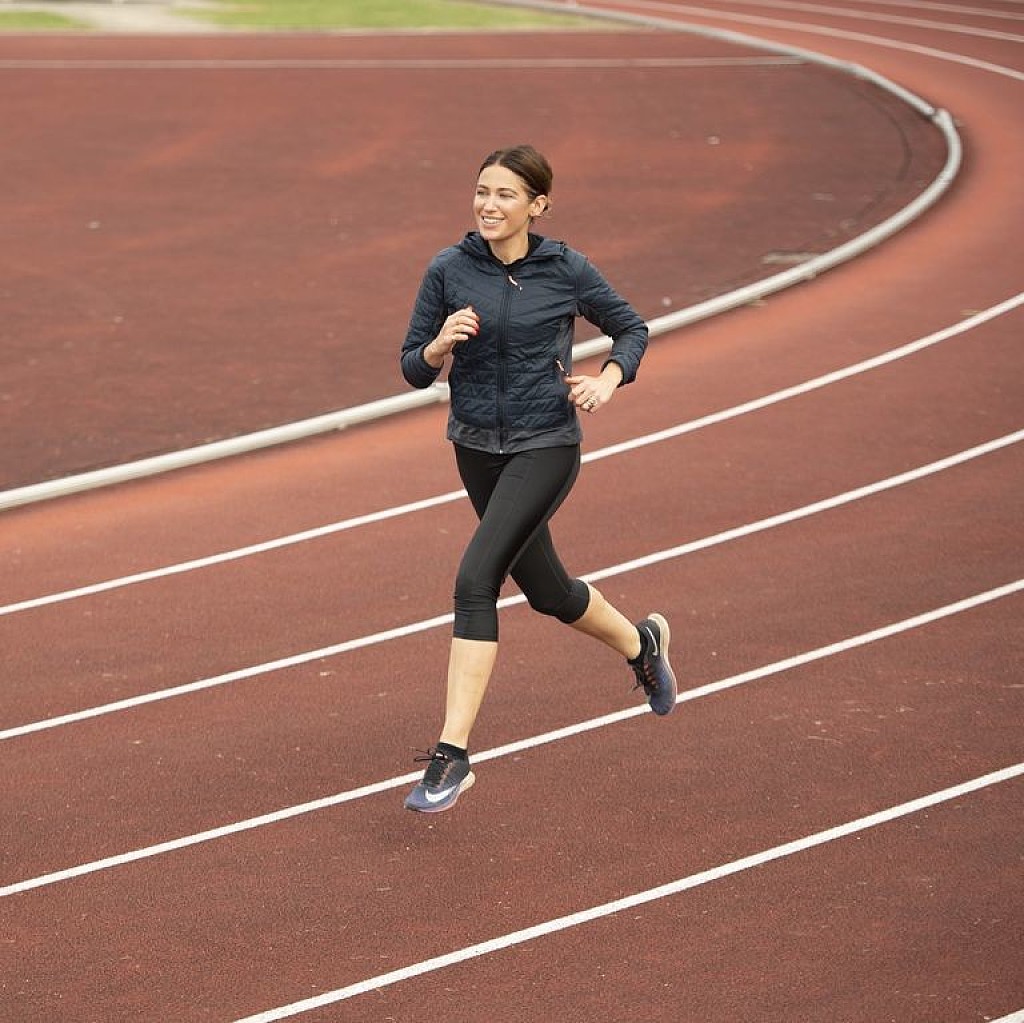Running News Daily
Running News Daily is edited by Bob Anderson. Send your news items to bob@mybestruns.com Advertising opportunities available. Train the Kenyan Way at KATA Kenya and Portugal owned and operated by Bob Anderson. Be sure to catch our movie A Long Run the movie KATA Running Camps and KATA Potato Farms - 31 now open in Kenya! https://kata.ke/
Index to Daily Posts · Sign Up For Updates · Run The World Feed
Articles tagged #Panic attack
Today's Running News
Choosing Morning Runs Over Evening Drinks
Instead of temporarily drowning her anxiety in alcohol, this writer learned she can soothe it by running.
To keep the cold at bay one December night in 2022, my friend Justine and I got together for some mulled wine, a hot drink as delicious as it is sentimental to me, reminding me of holiday gatherings and Christmas markets back home in the Czech Republic. As the familiar sweet smell of star anise, cloves, cinnamon, and lemon filled my apartment, I declared out loud (more to myself than to Justine) that I had a 10-mile run on my training plan the next day, so I needed to take the night easy.
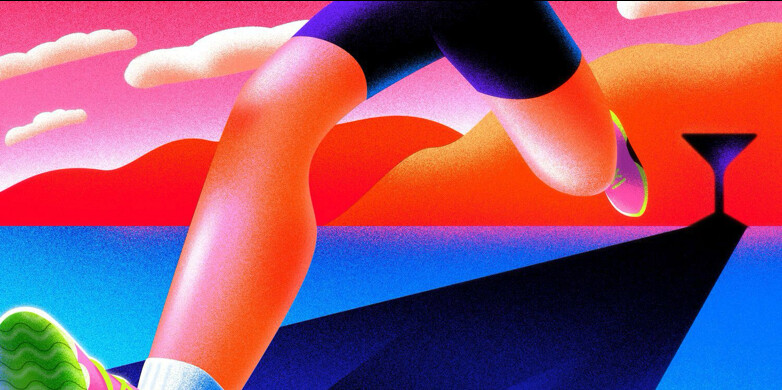
I was training for a 30K run on my 30th birthday, my longest distance to date, so I wanted to be rested and hydrated. Three cups of mulled wine later, I woke up from a short doze at 3 a.m. with a headache, just to helplessly stare at the ceiling until falling back asleep sometime in the early morning hours, swearing to myself I would never drink again. Tale as old as time.
I first came home drunk when I was 15. My parents didn’t notice. It was the year they were splitting. Their arguments were quiet, but the consequences spoke volumes. Money had become a point of contention at one point, and I was withdrawn from after-school activities, including basketball and the majority of my dance classes. I didn’t know what to do with myself. So when a clique I had been seeing around my hometown invited me to hang out with them, I was happy for some distraction from my newly gained free time as much as the silent war at home. They were the cool kids, which meant I was cool now, too! They drank cheap boxed wine any night—school or weekend—they could pull enough money together. They came from divorced or one-parent families. No one was waiting for them to come home either. I felt understood. And so when the boxed wine made its round to me, I took a swig, and then another one. I despised the taste, but that didn’t matter; I belonged.
Over time, boxed wine turned into bottles of cheap liquor. At 17, I looked to alcohol to help me tune out any negative feelings and thoughts, while also smoking my lungs away, often coming home just as the sun was making its way into the sky, unable to piece together the full night from the tidbits I remembered. By 20, I could outdrink almost everyone in the group.
At age 20 was also when I moved to the U.S. In a matter of a single flight over the Atlantic, I became underage again, entering a much stricter country that wouldn’t allow me to even go to a bar. And I had to quit smoking because the host family I moved in with wouldn’t tolerate it. With no substance to help me escape my racing mind, I had my first panic attack. One piece of advice I received was to try exercise. Willing to do anything that would help prevent another similar episode, I bought a pair of cheap workout shoes and a YMCA membership. I found my way to the treadmill because it seemed to me the least intimidating equipment at the gym. To my surprise, I enjoyed it.
But old habits are hard to shake, and I eventually turned 21. Although running was great, I felt no obligation to do it. So what if I skipped a day at the gym because of drinking the night away? I had fun, didn’t I? That’s what I told myself for the next nine years, while my hangovers grew progressively worse and I wasted weekends lying around, feeling sick.
So not being able to get out for a run on that sleep-deprived, heavy-headed morning after the mulled wine episode wasn’t that unusual. But this time, something shifted. Instead of my typical “so what” attitude, I grew mad. I had a goal to achieve, and therefore something needed to change. I decided to cut out alcohol for the remainder of my training. I promised myself I would celebrate with a Moscow Mule, my favorite cocktail, after I finished my birthday challenge.
I got through Christmas and New Year’s Eve sober—something that hadn’t happened since I was 14—and in January 2023 I ran my 30K. But when the time came to order that celebratory drink, I wasn’t in the mood. It was about a week later, when my legs recovered and I went out for an easy run, that I realized I was far more looking forward to putting in the morning miles than having a drink in the evening. So I decided to wait to drink until I truly felt like having one. Over a year later, that moment still hasn’t come.
Gradually, but surely, it has dawned on me that running helped me deal with my anxiety and stress in ways alcohol never truly did—that the benefits of running far outweigh whatever temporary numbness alcohol provided. I run a little faster on days my chest feels tight (and I entrust my invasive thoughts to my therapist instead of to alcohol).
This is not to bad-mouth booze and forget the fun times I surely had. I never planned to stop drinking completely, and somewhere down the line I might start over with alcohol in a healthier way. Who knows? For now, I’m much more excited about having a clear head, mornings with no hangover, and the miles I get to put in. For the first time in a long time, I can say I feel happy and in control of my life. Cheers to that!
Login to leave a comment
How to Use Running to Overcome Your Anxiety, According to Experts
If you have running anxiety instead of finding relief in the movement, here’s why and how to change that.
I learned that I suffer from anxiety when, some 10 years ago at the age of 20, I checked myself into a hospital for what I was convinced was an impending heart attack. My chest felt tight, my breathing rapid, my head spinning, arms tingling. I couldn’t think straight. After a series of tests, the ER doctor told me that physically, I was healthy. Then he gently suggested what I’d just experienced may have been a panic attack.
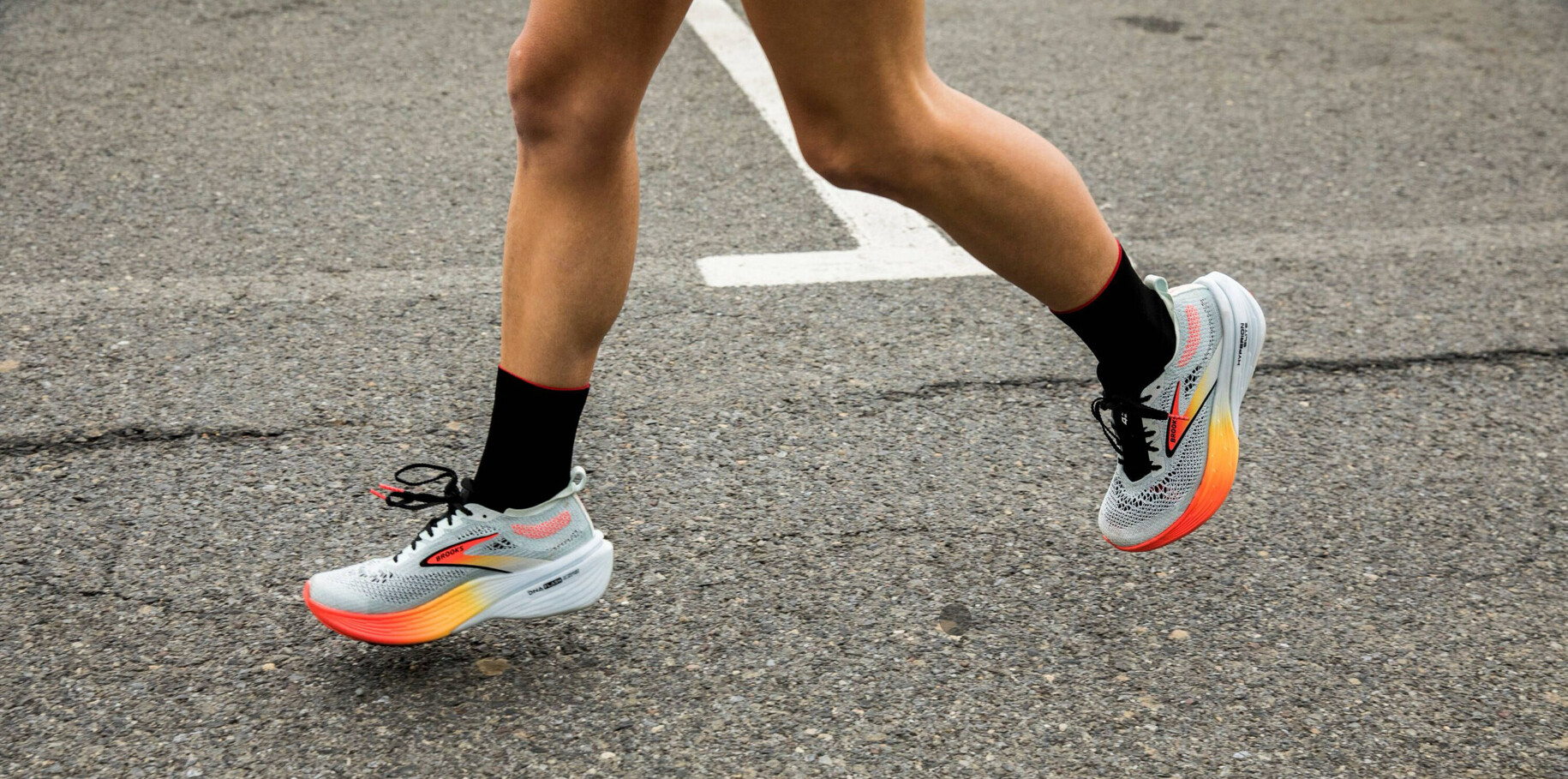
That a mental state could manifest itself as physical symptoms was a complete revelation to me. I’d experienced a variety of them before (usually attributing them to post-illness recovery or environmental reactions) but not at this magnitude. To help treat my anxiety, among other things, he recommended aerobic exercise. Because of its low barrier to entry, I turned to running.
My controlled treadmill runs went fine, but the moment I ran outside, it took a mere few minutes before a wave of tension washed over my body, leading to the symptoms I knew so intimately: shortness of breath, a fast-beating heart, sweating. Running made me more anxious, I figured. I tossed the idea—together with my running shoes—in the corner, and that was where my short-lived running venture ended.
It would take years for me to lace up my running sneakers again. I had to learn about how to get into running gradually and pace myself, along with accepting that I can walk when I need to. Now, running helps me manage my anxiety in ways I’d never expect.
After talking to other runners and psychologists, I learned that my situation isn’t unique. So with the help of experts, we’re sharing tips on how to make running work for your anxiety, alleviating your symptoms instead of exacerbating it.
What is anxiety?
Anxiety is the world’s most common mental health disorder, according to the World Health Organization (WHO).
“We have fear and we have anxiety,” says Arash Javanbakht, M.D., a psychiatrist and director of the Stress, Trauma, and Anxiety Research Clinic at Wayne State University, and the author of AFRAID: Understanding the Purpose of Fear, and Harnessing the Power of Anxiety. “Fear is when I’m perceiving a danger that is clear and identified. Anxiety is a vague state of fear when I’m worried about something happening with no specific thread detected yet.”
Around the world, 301 million people had an anxiety disorder in 2019, WHO reported, and although it’s highly treatable, only one in four people receive treatment.
We think of anxiety in two ways, says Jacob Meyer, Ph.D., an associate professor of exercise psychology and the director of the Wellbeing and Exercise Lab at Iowa State University. There is state anxiety, which is situational and can fluctuate throughout the day. Then there is trait anxiety, which, unlike state anxiety, stays with the individual and is thought of as less modifiable but can potentially improve with the right intervention over time.
Running can be part of this intervention.
What is the link between running and anxiety?
Running is scientifically proven to positively affect not only your physical, but also your mental health.
“People who exercise generally feel less stressed, less depressed, less anxious, less fatigued, more energetic, and tend to have better cognitive function,” Meyer says. “Almost any psychological process you might be worried about, at least in the short term, can be influenced positively by exercise.”
Zooming in on anxiety specifically, running can play an important role in treating the mental condition because it triggers the release of neurotransmitters like serotonin, a chemical that acts as a natural mood stabilizer, and a lack of which is linked to anxiety. It plays a role so important, in fact, that we dedicated a whole section to the science of it in The Runner’s World Guide to Mental Health.
As a plus, exposure to physical symptoms of anxiety can have a therapeutic effect, as you’ll learn to feel safer and more comfortable with these symptoms.
“Your brain automatically feels less worried about, say, increased heart rate or a tightness in the chest because it has happened over and over in a friendly environment where you had fun and nothing bad happened,” Javanbakht says.
By running, you’re creating more resilience against anxiety and exerting a bit of control over the situation.
How can you overcome running anxiety?
Understanding the science behind running’s positive influence on anxiety is a great first step toward utilizing the sport to improve your mental health. Here are some more suggestions on how to overcome running anxiety:
Get the official “clear”: If you have medical concerns, talk to your doctor to ensure you’re physically healthy and have no reason to worry about the sudden increase in heart rate or shortness of breath that aerobic exercise causes.
Start exposing yourself to running: If you previously thought of your running symptoms as anxiety symptoms, you created a link in your head that needs to be rewritten. One tool to help you do that is exposure therapy, especially in a controlled environment, like on a treadmill. “You crank it up, you feel your heart rate and your breathing getting labored, then you turn down the intensity,” says Jennifer Heisz, Ph.D., an associate professor in the department of kinesiology at McMaster University and the author of Move The Body, Heal The Mind: Overcome Anxiety, Depression, and Dementia and Improve Focus, Creativity, and Sleep. “As you watch all those body symptoms return to baseline, you realize you’re okay. In theory, exposing yourself to those symptoms can create a habituation to them so they’re not as fear-provoking.”
Keep your run under control: Slow progress is key. While on the run, reach the level of anxiety you can tolerate, say four or five out of 10 on a scale of perceived exertion, and stay there, Javanbakht says. Don’t let it get up, instead, stay with it until it recedes. “You have now developed a new learning,” he says. “Master this level, don’t rush it because, at the same time, you’re gaining confidence. Then you can move to the next level of exertion. Gradually, you’ll overcome your anxiety.”
Find a running buddy or group: “Social support is a major factor in how people feel in response to activity,” Meyer says. Surround yourself with like-minded runners who match your pace and goals. From helping you keep it slow while chatting to distracting you from your symptoms, experiencing running alongside others, and having a support network right alongside you goes a long way—and so does accountability.
How can you deal with anxiety if it comes up on the run?
The anxious state often arrives unexpectedly. If you feel anxiety creeping up while running, try the following strategies:
Repeat to yourself: You’re safe: If your anxiety doesn’t have any roots in your physical state, reminding yourself that you’re safe can help reduce the feeling of anxiety, Javanbakht says. Remember that most of your anxieties are false alarms.
Reframe your thoughts: When you start experiencing symptoms you perceive as anxiety, such as sweating, instead of negative concerns, try to link it to a positive thing, being caused by the movement you’re doing. “Think, how do I link my behavior to my feelings in an intentional and systematic way? Let’s make it my goal to reorient the way I think about sweating,” Meyer says. The same goes for other symptoms. Reframe them as you go.
Practice mindfulness: Anxiety means that your mind is in the past or the future, instead of the present. Mindfulness exercises can help bring you back to your body. While on the run, pay attention to the sounds you hear, or look around and list the colors you see, with all its shades, Javanbakht says. You can use all five senses, including your bodily feelings, to ground yourself in your body and the present moment.
Try humming: In one of the latest podcast episodes of Brene Brown’s Unlocking Us, Esther Perel, a psychotherapist, explained the soothing benefit of humming, which not only recreates the sounds heard by a baby when still in utero and the sensation of hearing the voice on the inside, but also, while humming, you’re very likely to focus on doing that instead of other worries on your mind. “When you hum, you create a barrier, a space between the thought that is creating the anguish and your nervous system,” Perel says.
What if anxiety perseveres?
On days when you go for a run already feeling anxious, be extra kind to yourself. Your heart rate may be elevated or you may already feel short of breath going into it, so take it slower than you normally would. Taking a break from tracking metrics on apps like Strava and letting go of expectations may be beneficial.
“Uncoupling exercise from performance for mental health may help,” Heisz says. “On days I’m not feeling very good, I take the intensity off and just put in the time. More of a compassionate approach to exercise is absolutely necessary.”
In the end, just remember that you’re not anxious as your default, you just have anxiety. Not every run will feel like a million bucks, but it doesn’t mean that running isn’t your thing. Tomorrow is always another day for another run.
As for me, it’s been a long journey to get here. These days, I run to soothe my anxiety, to silence it while being in control of the symptoms that once stood in my way. Hand-in-hand with therapy, I found it to be the best tool to help me make it through any day, but especially the ones ridden with anxiety. I may have been skeptical once, but I now believe that running is for everyone.
Login to leave a comment
If You’ve Had Panic Attacks While Running, You’re Not Alone
A mental health expert provides techniques to manage your brain and body’s reactions to anxiety.
For many people, running is the tool they use regularly to help alleviate symptoms of anxiety. But what happens when the activity that usually gives rise to a euphoric rush of endorphins seemingly begins to elicit a completely different response?
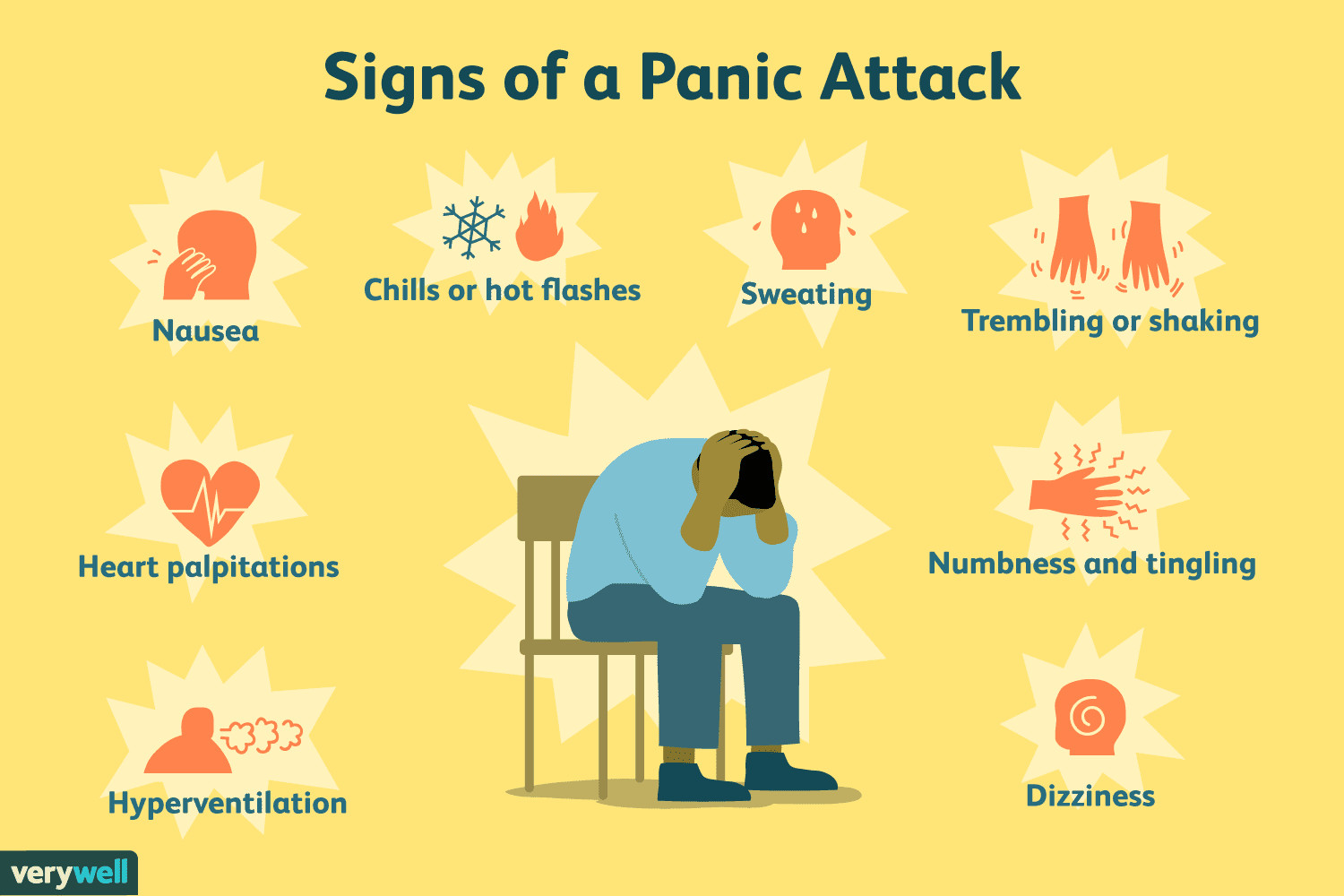
The truth is when you’re going through a stressful period of time in your life, particularly one that prompts anxious feelings in sporadic intervals, running may not be enough to make you immune to intense moments of panic. In fact, you may even find yourself experiencing a panic attack while running.
For longtime runner Ellen Isaac, panic attacks have just recently begun to occur while on runs—and often. As a former Division I athlete for Ohio University’s (OU) cross-country and track teams, Isaac is no stranger to stressful situations and is someone who genuinely looks forward to competition. However, it wasn’t until after she took her state board exam for physical therapy school this past April that she realized intense bouts of fear could immobilize her while running.
She was on a run with her boyfriend, Nick, when she started feeling overwhelmed with thoughts about whether or not she passed her exam.
“It got to the point where I literally just stopped in the middle of the towpath and was uncontrollably sobbing,” Isaac says.
She was able to identify that she was having a panic attack, so she immediately found a rock to sit on so that she didn’t fall down.
“Breathing while you’re running isn’t the easiest thing in the world, even when you’re running slow,” Isaac adds. “When you start to have those panic attacks, you’re short of breath from that, you’re short of breath from running, and it just completely spirals out of control. I just remember feeling totally out of control of what was going on in my life and out of control of what was happening with my body at that point in time.”
Michele Kerulis, Ed.C., L.C.P.C., who’s certified with the Association for Applied Sport Psychology and a professor of counseling at the Family Institute at Northwestern University, explains that panic attacks are caused by intense fears, concerns, or anxiety. And while these feelings are perpetrated by the mind, they can result in equally intense physical symptoms—like increased heart rate, breathing, and sweating—much like the ones Isaac experienced.
"Running in and of itself does not cause someone to slip into a panic attack—it’s more likely the runner’s thought process quickly snowballs from a small uncomfortable thought into a full-blown panic attack,” Kerulis tells Runner’s World. “For example, if someone has a fear of dogs and sees a dog on their running route, that person might have an automatic thought such as, ‘that dog is going to attack me,’ which leads to feeling intense fear, which can result in a panic attack.”
She points out that from a psychological perspective, when someone experiences a panic attack, it’s the body’s primitive response saying, “I feel like I really need to protect myself right now, I’m scared.” This reaction can then spearhead a physiological response that mimics the one that occurs while you’re running.
“At that point, you experience increased respiration, you’re breathing harder, your heart rate goes up, you’re sweating, [you have] increased blood flow to your muscles—those are the exact same things that happen when you’re running. It’s the exact same physiological response as a panic attack,” says Kerulis. “So you’re having those same, almost ‘alert type’ of neurotransmitters in your brain, telling your body to accelerate. Even though the circumstances are very different, physiologically we’re experiencing those same things.”
→ Join Runner’s World+ today for exclusive access to more expert health and running tips!
While Isaac says very few things will help her get out of a panic attack once one ensues, she has one method that seems to, at the very least, stabilize her symptoms and prevent them from exacerbating any further.
“When it happens, a lot of times what I end up doing is I usually end up counting all of the seconds until I calm down [while still running]. Sometimes I end up counting seconds for three miles. And then I’m like, okay, I’m fine now,” she says. “I do that during races, too. If I’m starting to freak out and get to that part of the race where I don’t know if I can keep going, I count seconds.”
As Kerulis points out, running might reduce some symptoms of anxiety, but it won’t eliminate the thought process that triggers anxious reactions. Still, there are some elements that are learned from running that may soothe you in moments where you begin to feel frightened.
"Running has helped a lot of people develop skills to control their physiological symptoms, which can help them with body-to-mind relaxation techniques that are helpful when they feel as if they will experience a panic attack,” says Kerulis.
Despite how terrifying these panic attacks are when they occur while running—not to mention the uncertainty of when they will happen during her run—Isaac remains grateful for the sport.
“If running kind of stirs up some anxiety for me, on one hand, yeah it’s unfortunate that it’s plaguing a part of my life that’s always been such a big stress relief for me,” she says. “But, if it takes some anxiety and panic attacks on runs for me to realize that there are things in my life that I need to address that I’m trying to shove under the rug, then I’m kind of okay with that.”
For those who experience regular bouts of anxiety, there are ways you can consciously restructure your own physiology while running so that you can better prevent slipping into that panicked state. Kerulis says that mental health providers often use mind-to-body as well as body-to-mind techniques to help people manage their cognitive (mind and thoughts) and physiological (body) reactions to anxiety.
What is a mind-to-body technique?
“In the example above where a runner sees a dog on their route, once they notice their automatic thought, ‘that dog is going to attack me,’ they can work to stop the thought from snowballing by saying ‘stop!’ to themselves. Then [they can] rationalize the situation with a new, restructured thought like, ‘I know I’m scared right now, but that person seems to have control over their walk with their dog—I am safe,’” says Kerulis. “This will allow the person to slow down their thoughts and refocus on enjoying their run.”
She adds that picking up a meditation practice is another way you can gain control of your thought processes, as it can produce a calming effect.
What is a body-to-mind technique?
Kerulis explains that this method encourages people to address their physiological symptoms of a panic attack head-on and allows them to focus on de-escalating those physical feelings. So, once someone can identify what they feel in their body—both when they're having a panic attack and when they’re running—they can begin to separate the two sensations and regain a sense of control.
“When someone is sprinting, for example, they will have heavy breathing and need to learn how to manage breath control to gain skills as a sprinter,” says Kerulis. “The same breath control can be used when someone feels a panic attack coming on. This way, people can focus more on their bodies and less on their minds at that moment. Once the wave of anxiety passes, they can re-evaluate the situation that triggered the anxious feelings.”
The bottom line
Consciously employing both mind-to-body and body-to-mind techniques while running may be the answer to staving off the onset of a panic attack. As Kerulis notes, regular exercise can help you understand your body’s responses to stress.
“Once you have a familiarity with your body’s responses, you can learn ways to slow down these responses, which will also help you gain a sense of control,” she says.
by Runner’s World
Login to leave a comment
Natural energy boosters that you can add to your daily routine
Natural energy-boosting drinks are made from plants and do not contain artificial additives. Artificial energy boosters on the other hand contain caffeine, artificial additives, and added sugar. These ingredients can have a lot of undesirable side effects. For instance, the caffeine in artificial energy drinks can cause anxiety and panic attacks especially if you take too much of it. Irritability, insomnia, and palpitations in the heart are other side effects that can occur due to the excess caffeine that is found in artificial energy drinks. The caffeine in these drinks is not natural unlike that in natural energy drinks.
The added sugar in the energy drinks acts as a stimulator and these drinks may contain as much as 20 teaspoons of sugar in each drink. The number of drinks in these drinks can be more than the one in a bottle of Coca-Cola. This sugar gives you a temporary energy boost but it also comes with many side effects. For instance, the excess sugar triggers your brain to release dopamine which is also produced by addictive drugs and this can make you get a sugar addiction.
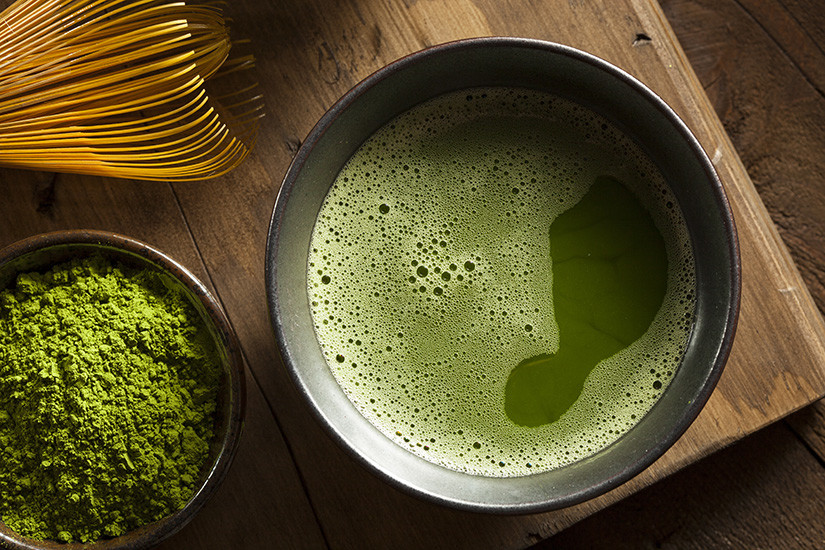
Sugar is also reported to increase the inflammation in the brain and trigger the release of a stress hormone called cortisone and this can lower your moods and make you feel sadder than normal. Since sugar also affects your brain function, you may have short concentration spans, reduced short-term memory, and the ability to learn and the sugar also puts you at risk of diabetes and other lifestyle diseases. Since natural energy booster drinks don’t contain these artificial additives, they do not give you these unwanted effects. This is why natural energy boosters are becoming more popular. Given below are some examples of natural energy boosters:
Guayusa Tea
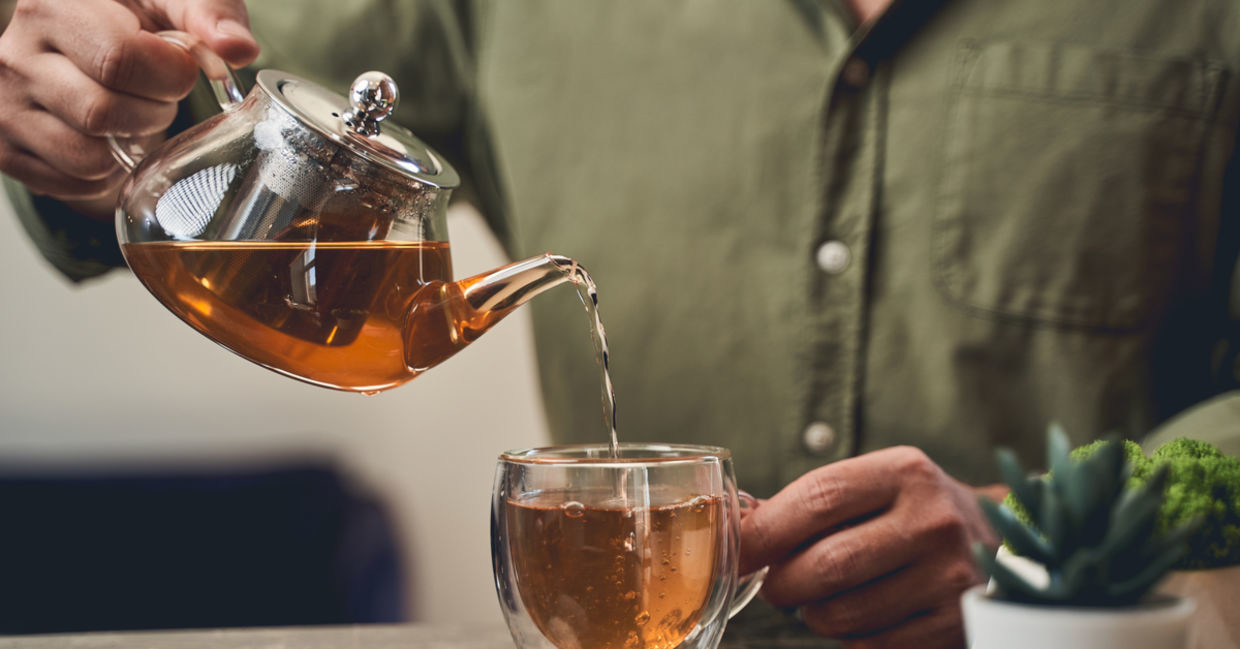
Guayusa tea is an energy drink that comes from an evergreen tree called Camellia sinensis with caffeinated leaves mostly in the areas near the Amazon rainforest. Some of the areas where Guayusa grows are in the southern part of Colombia and the northern part of Peru. In Ecuador, there is an indigenous group called Kichwa that has used the Guayusa tea for more than a thousand years. The Guayusa tea is brewed like the normal tea.
Some of the benefits of Guayusa tea include providing energy and strength and therefore most people take it very early in the morning so that they can concentrate at work throughout the day. The Guayusa tea has been nicknamed the “night watchman” because hunters use it before they go hunting to help them stay alert. Other benefits of the Guayusa tea include improving concentration and focus and helping you to stay calm.
Matcha Tea
Matcha tea is also derived from the Camellia sinensis where these tea plants are covered for about 30 days to prevent direct sunlight. When the tea plants are covered, the amount of chlorophyll that they have increased, and therefore the plants get a green hue that is darker than the regular tea. This also increases the amino acid contents and these are building blocks for proteins. Upon harvesting, the leaves are separated from the stems and veins and then they are ground to make Matcha powder.
Some of the benefits of Matcha include alertness and mental focus, providing antioxidants that destroy the free radicals that cause chronic diseases. Matcha also enhances attention and memory and prevents damage to major organs like the liver and kidney. Matcha tea also reduces the risk of cancer, helps with weight loss, and boosts the health of your heart.
Green Tea
Green tea is made by pan-frying and steaming the leaves of the Camellia sinensis plant to heat them. These leaves are then dried. Drying of these leaves prevents them from turning brown and also preserves their green color and fresh taste. When the green tea is brewed, it can either be green or brown and it can have a toasted, steamed, sweet, or grass-like taste. The benefits of green tea include improving memory and concentration, helping with weight loss, reducing the risk of cancer, stroke, heart disease, and other chronic inflammatory conditions.
Turmeric Tea
Turmeric is a spice that is extracted from the plants of the Curcuma longa plant. Most of the turmeric supply comes from India but the plant is now being grown in many parts of the world. The turmeric powder or the grated turmeric root can be used to brew the turmeric tea. To ensure the purity and hygiene of your turmeric tea, you can grind the turmeric tea for yourself.
Some of the benefits of turmeric tea include boosting energy especially when you combine the tea with physical exercise, and anti-inflammatory properties therefore it helps in the treatment of inflammatory conditions like arthritis. Other benefits of turmeric include boosting the immune function because turmeric has some antioxidants. The tea can therefore help to fight bacterial, viral diseases. Turmeric tea also helps in the treatment of cancer, and liver diseases.
Yerba Mate
Yerba mate is a herb that is common in South American countries like Uruguay, Argentina, and Brazil. The tea is prepared in traditional gourds called “mate” where the yerba herb is grounded in. Coldwater is added to this powder to prepare an infusion together with hot water. A tea-like beverage forms when the yerba infuses into the water. The Yerba mate has caffeine which helps to stay alert and energized. Other benefits of Yerba mate include an increase in mental focus, weight loss, and enhancing performance in sports. The tea also helps to reduce inflammation.
Fresh Fruit Juices
Fresh juices are also important natural energy boosters. Some of the juices that you can take include orange juice and beetroot juice. Beetroots contain nitric acid which dilates blood vessels and improves the blood supply throughout the body while helping to reduce blood pressure. You can mix the beetroots with lemons and apples to increase the energizing effects. This is a drink that you can enjoy on a hot afternoon.
In summary, natural energy boosters do not contain the artificial additives that are in artificial energy boosters like excess caffeine and sugar. In addition to providing energy, natural energy boosters also have other benefits like reducing inflammation and free radicals in the body. These drinks have also been useful in the prevention of cancer and other chronic diseases like liver and kidney diseases. Some of the natural energy boosters include Guayusa tea, Matcha, green tea, beetroot juice, and turmeric tea.
by Colorado Runner
Login to leave a comment
Author and journalist Bella Mackie on how running helped her mental health
I’ve been an anxious person my whole life. I think it’s common with things like anxiety and OCD for it to present in childhood. I remember those feelings as a kid, but not knowing what it was. I think a lot of people, when they’re finally diagnosed with depression or anxiety, feel relief.
People with a mental health issue get good at keeping it a secret. As a kid, I had OCD behaviours, like turning the light switch on and off. Later, I got adept at making excuses for things. I didn’t fly or take the tube for a long time, and came up with excuses.
I don't remember why I decided to go running. But I know I was embarrassed, because I did it at night. It was down an alleyway and I just kept going back there because I was too ashamed to run anywhere else, as I thought people would laugh and shout at me. You realise, though, that it’s a load of balls. No one is looking at you:everyone’s on their phone.
I don't know why I went back for a second run. Perhaps it’s because for those three minutes I felt a bit less teary, and a bit less focused on what was going on inside my brain. I always say that running is a chance to run away, but you get to come home.
With running, you incrementally improve every time you do it. You’re hitting these goals and feeling proud of yourself. And it gives you this sense of independence, which for someone like me, with agoraphobia,I found to be the most mesmerising, intoxicating thing in the whole world.
When I was writing my book, Jog On, I read a lot about dualism: the idea that the mind and body are connected. In the modern world, we’ve separated them: we see our minds as the primary thing to be prized and our bodies as vessels that carry our minds. We forget how much impact the body has on the brain. Running was my way to get my mind out of the driving seat and put my body in control.
Before running, I was the most unfit person you could meet. I thought people who exercised were odd. I’d spent gym lessons at school smoking cigarettes. I did no physical exertion until I started to run, aged 30.
Running taught me not to be scared of things. Within a month, I was running through central London on my own, and I hadn’t been there on my own for years. And every time I did it, it enforced the idea that I was fine. I started to do other things that scared me: getting in lifts, going away on my own, trapezing. Now my motto is: if it scares me, I have to do it. I haven’t had a panic attack in six years.
I'm an anti-wellness proponent. I eat ice cream after every run. I drink loads of Diet Coke and wine. I’m a really unhealthy person who runs every day. I’m never training for anything. I’m not a racer; I’m not interested in personal bests. I’m a really crap runner. I do about 12-13km every day, and that sets me up for the rest of the day.
by Runner’s World
Login to leave a comment


